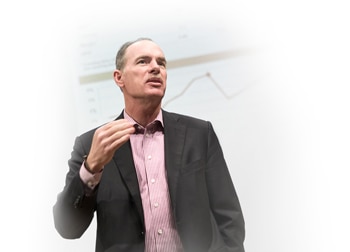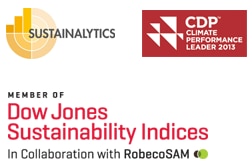StartSearchHere
UNGC Advanced Level Reporting
ELECTROLUX AB
Electrolux endorses the United Nations Global Compact and its ten principles on environment, labor practices, human rights and anti-corruption. Electrolux is also a signatory of the UNGC Water Mandate.
The 2013 Sustainability Report and the 2013 Annual Report reflect its commitment to these principles and the efforts to continuously improve performance. The 2013 Sustainability Report is third party assured. See the enclosed Assurance Statement for information on the scope of assurance.
This UNGC Communication on Progress is aligned with the UNGC’s Advanced level of reporting. Where applicable, the below table indicates where readers can find examples of how Electrolux meets best practice levels in regards to the criteria for reporting as defined by the UN Global Compact, including the Annex on business and peace. The column to the right indicates the information requirements of UNGC Advanced level for each criterion. The elements indicated with bold text are met in one or more of the links listed in the right hand column (References).
For more information, view the UN Global Compact website.
| UN Global Compact Advanced Criteria |
Reference |
Criterion 1: The COP describes mainstreaming into corporate functions and business units
-
Place responsibility for execution of sustainability strategy in relevant corporate functions (procurement, government affairs, human resources, legal, etc) ensuring no function conflicts with company’s sustainability commitments and objectives.
- Align strategies, goals and incentive structures of all business units and subsidiaries with corporate sustainability strategy.
- Assign responsibility for corporate sustainability implementation to an individual or group within each business unit and subsidiary.
-
Design corporate sustainability strategy to leverage synergies between and among issue areas and to deal adequately with trade-offs.
- Ensure that different corporate functions coordinate closely to maximize performance and avoid unintended negative impacts.
|
CEO statement
Approach to sustainability
Integrating sustainability
|
Criterion 2: The COP describes value chain implementation
-
Analyze each segment of the value chain carefully, both upstream and downstream, when mapping risks, opportunities and impacts.
-
Communicate policies and expectations to suppliers and other relevant business partners.
-
Implement monitoring and assurance mechanisms (e.g. audits/screenings) for compliance within the company’s sphere of influence.
-
Undertake awareness-raising, training and other types of capacity building with suppliers and other business partners.
|
Influencing the value chain
Procurement practices
Mapping priorities
Labor practices: management approach
Strengthening the chain in Egypt
|
Criterion 3: The COP describes robust commitments, strategies or policies in the area of human rights
- Commitment to comply with all applicable laws and respect internationally recognized human rights, wherever the company operates (e.g., the Universal Declaration of Human Rights, Guiding Principles on Human Rights).
- Integrated or stand-alone statement of policy expressing commitment to respect and support human rights approved at the most senior level of the company.
- Statement of policy stipulating human rights expectations of personnel, business partners and other parties directly linked to operations, products or services.
- Statement of policy publicly available and communicated internally and externally to all personnel, business partners and other relevant parties.
|
Human rights management approach
Labor practices management approach
Rights-aware
Code of Conduct (Electrolux.com)
Code of Ethics (Electrolux.com)
|
Criterion 4: The COP describes effective management systems to integrate the human rights principles
- Process to ensure that internationally recognized human rights are respected.
- On-going due diligence process that includes an assessment of actual and potential human rights impacts.
- Internal awareness-raising and training on human rights for management and employees.
- Operational-level grievance mechanisms for those potentially impacted by the company’s activities.
- Allocation of responsibilities and accountability for addressing human rights impacts.
- Internal decision-making, budget and oversight for effective responses to human rights impacts.
- Processes to provide for or cooperate in the remediation of adverse human rights impacts that the company has caused or contributed to.
- Process and programs in place to support human rights through: core business; strategic philanthropic/social investment; public policy engagement/advocacy; partnerships and/or other forms of collective action.
|
Human rights management approach
Procurement practices
Mapping and addressing human rights risks
Society management approach
Anti-corruption and public policy
|
Criterion 5: The COP describes effective monitoring and evaluation mechanisms of human rights integration
- System to monitor the effectiveness of human rights policies and implementation with quantitative and qualitative metrics, including in the supply chain.
- Monitoring drawn from internal and external feedback, including affected stakeholders.
- Leadership review of monitoring and improvement results.
- Process to deal with incidents the company has caused or contributed to for internal and external stakeholders
- Grievance mechanisms that are legitimate, accessible, predictable, equitable, transparent, rights-compatible, a source of continuous learning, and based on engagement and dialogue
- Outcomes of integration of the human rights principles
|
Human rights management approach
Procurement practices
Mapping and addressing human rights risks
Labor practices management approach
Society management approach
Anti-corruption and public policy
Performance reviews: People and operations (Ethical business)
Performance reviews: Stakeholders and society (Responsible sourcing)
|
Criterion 6: The COP describes robust commitments, strategies or policies in the area of labor
- Reference to principles of relevant international labor standards (ILO Conventions) and other normative international instruments in company policies.
- Reflection on the relevance of the labor principles for the company.
- Written company policy to obey national labor law, respect principles of the relevant international labor standards in company operations worldwide, and engage in dialog with representative organization of the workers (international, sectoral, national).
- Inclusion of reference to the principles contained in the relevant international labor standards in contracts with suppliers and other relevant business partners.
- Specific commitments and Human Resources policies, in line with national development priorities or decent work priorities in the country of operation.
- Participation and leadership in wider efforts by employers’ organizations (international and national levels) to jointly address challenges related to labor standards in the countries of operation, possibly in a tripartite approach (business – trade union – government).
- Structural engagement with a global union, possibly via a Global Framework Agreement.
|
Labor practices management approach
Human rights management approach
Rights-aware
Code of conduct
|
Criterion 7: The COP describes effective management systems to integrate the labor principles
- Risk and impact assessments in the area of labor.
- Dialogue mechanism with trade unions to regularly discuss and review company progress in addressing labor standards.
- Allocation of responsibilities and accountability within the organization.
- Internal awareness-raising and training on the labor principles for management and employees.
- Active engagement with suppliers to address labor-related challenges.
- Grievance mechanisms, communication channels and other procedures (e.g., whistleblower mechanisms) available for workers to report concerns, make suggestions or seek advice, designed and operated in agreement with the representative organization of workers
|
Labor practices management approach
Human rights management approach
Procurement practices
Mapping and addressing human rights risks
Society management approach
Anti-corruption and public policy
|
Criterion 8: The COP describes effective monitoring and evaluation mechanisms of labor principles integration
- System to track and measure performance based on standardized performance metrics.
- Dialogues with the representative organization of workers to regularly review progress made and jointly identify priorities for the future.
- Audits or other steps to monitor and improve the working conditions of companies in the supply chain, in line with principles of international labor standards.
- Process to positively engage with the suppliers to address the challenges (i.e., partnership approach instead of corrective approach) through schemes to improve workplace practices.
- Outcomes of integration of the labor principles.
|
Human rights management approach
Procurement practices
Mapping and addressing human rights risks
Labor practices management approach
Society management approach
Anti-corruption and public policy
Strengthening the chain in Egypt
Performance reviews: People and operations (Ethical business)
Performance reviews: Stakeholders and society (Dialog)
|
Criterion 9: The COP describes robust commitments, strategies or policies in the area of environmental stewardship
- Reference to relevant international conventions and other international instruments (e.g. Rio Declaration on Environment and Development).
- Reflection on the relevance of environmental stewardship for the company.
- Written company policy on environmental stewardship.
- Inclusion of minimum environmental standards in contracts with suppliers and other relevant business partners.
- Specific commitments and goals for specified years.
|
Environment management approach
Procurement practices
Product responsibility: PR1-9 and management approach
Environmental policy
|
Criterion 10: The COP describes effective management systems to integrate the environmental principles
- Environmental risk and impact assessments.
- Assessments of lifecycle impact of products, ensuring environmentally sound management policies.
- Allocation of responsibilities and accountability within the organization.
- Internal awareness-raising and training on environmental stewardship for management and employees.
- Grievance mechanisms, communication channels and other procedures (e.g. whistleblower mechanisms) for reporting concerns or seeking advice regarding environmental impacts.
|
Environment management approach
Managing sustainability risks
Procurement practices
Integrating sustainability
Product responsibility: PR1-9 and management approach
Society management approach
|
Criterion 11: The COP describes effective monitoring and evaluation mechanisms for environmental stewardship
- System to track and measure performance based on standardized performance metrics.
- Leadership review of monitoring and improvement results
- Process to deal with incidents.
- Audits or other steps to monitor and improve the environmental performance of companies in the supply chain.
- Outcomes of integration of the environmental principles.
|
Materials
Energy
Products and services
Procurement practices
Product responsibility: and management approach
Performance reviews: Products, services and markets
Performance reviews: People and operations (Efficiency)
|
Criterion 12: The COP describes robust commitments, strategies or policies in the area of anti-corruption
- Publicly stated formal policy of zero-tolerance of corruption.
- Commitment to be in compliance with all relevant anti-corruption laws, including the implementation of procedures to know the law and monitor changes.
- Statement of support for international and regional legal frameworks, such as the UN Convention against Corruption.
- Detailed policies for high-risk areas of corruption.
- Policy on anti-corruption regarding business partners.
|
Society management approach
|
Criterion 13: The COP describes effective management systems to integrate the anti-corruption principle
- Support by the organization’s leadership for anti-corruption.
- Carrying out risk assessment of potential areas of corruption.
- Human Resources procedures supporting the anti-corruption commitment or policy, including communication to and training for all employees.
- Internal checks and balances to ensure consistency with the anti-corruption commitment.
- Actions taken to encourage business partners to implement anti-corruption commitments.
- Management responsibility and accountability for implementation of the anti-corruption commitment or policy.
- Communications (whistleblowing) channels and follow-up mechanisms for reporting concerns or seeking advice.
- Internal accounting and auditing procedures related to anticorruption.
|
Society management approach
Anti-corruption and public policy
|
Criterion 14: The COP describes effective monitoring and evaluation mechanisms for the integration of anti-corruption
- Leadership review of monitoring and improvement results.
- Process to deal with incidents.
- Public legal cases regarding corruption.
- Use of independent external assurance of anti-corruption programs.
- Outcomes of integration of the anti-corruption principle.
|
Anti-corruption and public policy
|
| UN Global Compact Advanced Criteria |
Reference |
Criterion 15: The COP describes core business contributions to UN goals and issues
- Align core business strategy with one or more relevant UN goals/issues.
- Develop relevant products and services or design business models that contribute to UN goals/issues.
- Adopt and modify operating procedures to maximize contribution to UN goals/issues.
|
CEO statement
Influencing the value chain
Inclusive approach
Product examples
Showing a clean set of heels
Rights-aware
Green and gold at Sao Carlos
Performance reviews: People and operations (efficiency)
Electrolux.com (UNGC)
|
Criterion 16: The COP describes strategic social investments and philanthropy
- Pursue social investments and philanthropic contributions that tie in with the core competencies or operating context of the company as an integrated part of its sustainability strategy.
- Coordinate efforts with other organizations and initiatives to amplify—and not negate or unnecessarily duplicate—the efforts of other contributors.
- Take responsibility for the intentional and unintentional effects of funding and have due regard for local customs, traditions, religions, and priorities of pertinent individuals and groups.
|
Society management approach
Community
|
Criterion 17: The COP describes advocacy and public policy engagement
- Publicly advocate the importance of action in relation to one or more UN goals/issues.
- Commit company leaders to participate in key summits, conferences, and other important public policy interactions in relation to one or more UN goals/issues.
|
Anti-corruption and public policy
Star performers 2014
Performance reviews: Stakeholders and society (Dialog)
|
Criterion 18: The COP describes partnerships and collective action
- Develop and implement partnership projects with public or private organizations (UN entities, government, NGOs, or other groups) on core business, social investments and/or advocacy
- Join industry peers, UN entities and/or other stakeholders in initiatives contributing to solving common challenges and dilemmas at the global and/or local levels with an emphasis on initiatives extending the company’s positive impact on its value chain
|
An inclusive approach
Human rights management approach
Environment management approach
|
| UN Global Compact Advanced Criteria |
Reference |
Criterion 19: The COP describes CEO commitment and leadership
- CEO publicly delivers explicit statements and demonstrates personal leadership on sustainability and commitment to the UN Global Compact
- CEO promotes initiatives to enhance sustainability of the company’s sector and leads development of industry standards
- CEO leads executive management team in development of corporate sustainability strategy, defining goals and overseeing implementation
- Make sustainability criteria and UN Global Compact principles part of goals and incentive schemes for CEO and executive management team
|
CEO statement
|
Criterion 20: The COP describes Board adoption and oversight
- Board of Directors (or equivalent) assumes responsibility and oversight for long-term corporate sustainability strategy and performance
- Board establishes, where permissible, a committee or assigns an individual board member with responsibility for corporate sustainability.
- Board (or committee), where permissible, approves formal reporting on corporate sustainability (Communication on Progress)
|
Board oversight
|
Criterion 21: The COP describes stakeholder engagement
- Publicly recognize responsibility for the company’s impacts on internal and external stakeholders.
- Define sustainability strategies, goals and policies in consultation with key stakeholders.
- Consult stakeholders in dealing with implementation dilemmas and challenges and invite them to take active part in reviewing performance.
- Establish channels to engage with employees and other stakeholders to hear their ideas and address their concerns, and protect ‘whistleblowers’.
|
Influencing the value chain
Mapping priorities
Inclusive approach
Procurement practices
Performance reviews: Stakeholders and society (Dialog)
|
| UN Global Compact Advanced Criteria |
Reference |
The COP describes policies and practices related to the company's core business operations in high-risk or conflict-affected areas
-
Information on how policies, strategies and operating practices have been adapted to the specific high-risk/conflict context based on due diligence.
-
Adherence to best practices even where national law sets a lower standard, including in the management of security services.
- Management of the supply chain to avoid contributing to conflict through purchasing decisions and practices.
The COP describes policies and practices related to the company's government relations in high-risk or conflict-affected areas
- Assessment of opportunities for constructive engagement with government actors in order to support peace.
- Measures undertaken to avoid complicity in human rights violations by government actors.
-
Management practices aimed at preventing corrupt relationships with government officials.
The COP describes local stakeholder engagement and strategic social investment activities of the company in high-risk or conflict-affected áreas
- Assessment of opportunities for constructive engagement with government actors in order to support peace.
- Stakeholder engagement mechanisms across company and contractor operations.
- Approaches to stakeholder engagement involving civil society, international organizations, etc.
- Actions toward constructive and peaceful company-community engagement.
- Sustainable social investment projects.
|
Human rights management approach
Strengthening the chain in Egypt
Rights-aware
Society management approach
Anti-corruption and public policy
Power to the people |
StopSearchHere




